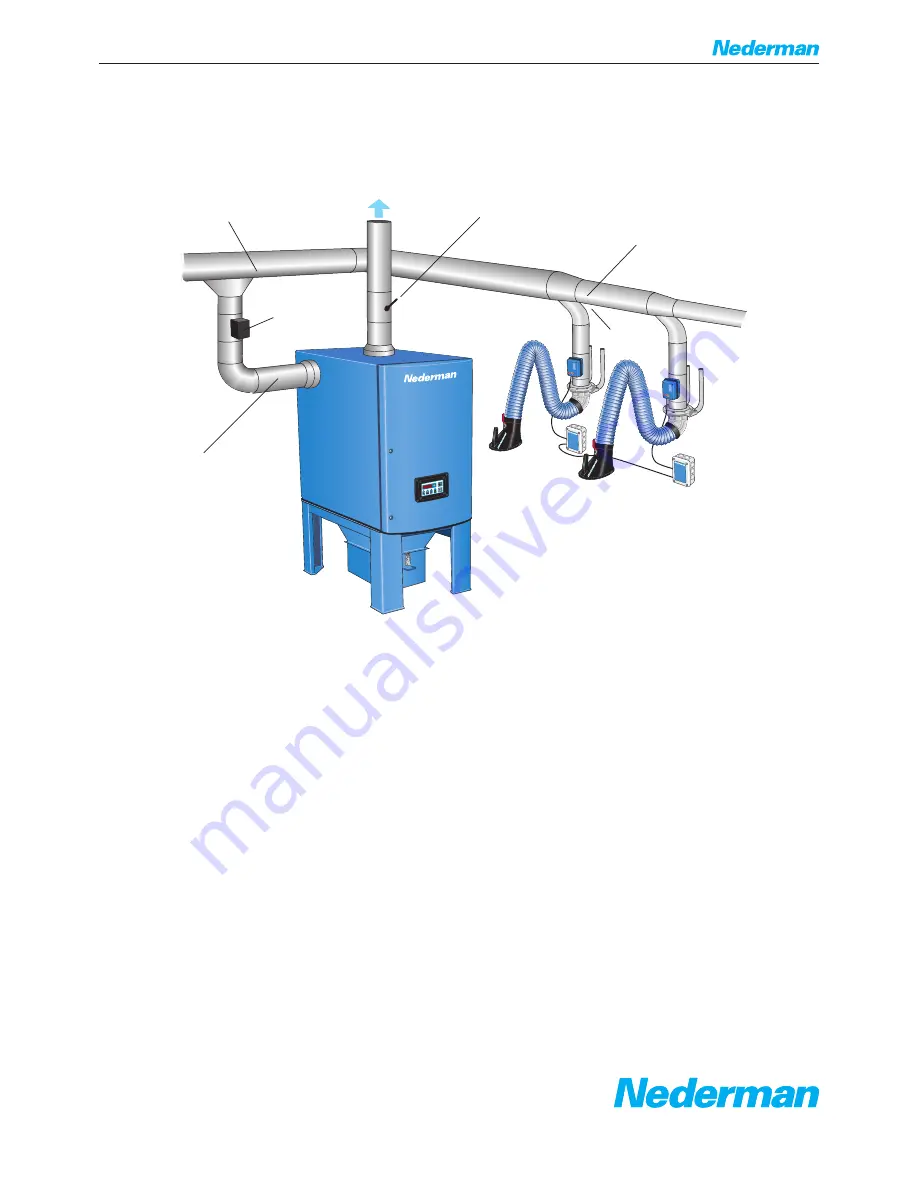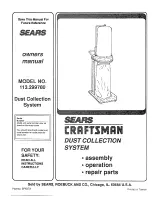
www.nederman.com
• To avoid pressure losses and dust deposits in the system it is
important to use the correct duct diameter. The transport velocity
shall be at least 10–12 m/s (2000–2400 ft/min) for fume and 15–20
m/s (3000–4000 ft/min) for dust. Take velocity into account when
choosing the duct diameters. The velocity should never decrease en
route to FilterMax C25. The following duct diameters can be used
for the connection to FilterMax C25: Ø250 mm (10”) for the inlet and
Ø315 mm (12”) for the outlet.
• Use long radius bends and no t-pieces.
• Install plenty of cleaning access points in the ducting system before
FilterMax C25.
• If the dust is abrasive it may be necessary to use thick walled (or rub-
ber coted) material in bends and other exposed areas.
• To avoid pressure losses the ducting system should be as short as
possible and designed with two or more branches.
• Use larger diameters on the clean side to reduce pressure losses.
• Use fire dampers when the duct system is passing from one fire zone
to another. NB! Fire dampers do not stop explosions!
• Install a flow meter in the outlet duct, at least 3 m (10 ft.) from the filter
outlet.
• If there is a significant fire risk, it is better to install several small sys-
tems then one large system.
• Install a sparktrap to prevent sparks or burning/glowing material from
entering the FilterMax C 25.
• At welding work on oiled material the filter cartridges should be trea-
ted with fine lime powder (approx. 60 g) before the first start.
System installation
NB! To adsjust the air flow, a
regulatiing damper in the clean
air duct can be used
Cleaning access point
The inlet on the opposite side
is used as a cleaning and
inspaction acces point
Cleaning access point
After cleaning
damper
Cleaning
access point
Nederman Original
Fume Extractors with
automatic dampers
30–45°
www.nederman.com
FilterMax C25





















